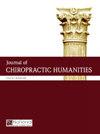Delivering Accessible Chiropractic Services in a Culturally Sensitive Manner: The Aboriginal Health in Aboriginal Hands Program
Q3 Health Professions
引用次数: 0
Abstract
Objective
The purposes of this study were to (1) identify important principles for facilitating accessibility to allied health services such as chiropractic treatment for Aboriginal and Torres Strait Islander people and delivering these services in a culturally appropriate manner; and (2) to contextualize these principles by mapping them to an allied health program (Aboriginal Health in Aboriginal Hands [AHAH]) currently delivering these services within an Indigenous community.
Methods
To gather information about the program`, yarnings were held with stakeholders of the AHAH clinic. Key features of the program were then mapped against the identified domains of accessibility and principles for design and delivery in the context of cultural sensitivity.
Results
Notable aspects of the AHAH service design and delivery included building on the strengths of the community; being located at an established Aboriginal community gathering space that provides a familiar location for prospective service users; high level and face to face involvement of Aboriginal community members who facilitate the “welcoming nature” and cultural appropriateness of the service. Furthermore, the oversight and daily involvement of Indigenous community members ensures the application of the domains of approachability, acceptability, availability, affordability, and appropriateness and the cultural principles identified as important by Aboriginal leaders and researchers for working with “Aboriginal and Torres Strait Islander” communities (lore, love, look, listen, learn, lead, and land).
Conclusion
Applying the principles of accessibility and cultural appropriateness, appears to facilitate the delivery of therapies, such as chiropractic, with “Aboriginal and Torres Strait Islander” communities.
以文化敏感的方式提供可获得的脊椎按摩服务:土著居民手中的土著健康计划
目的本研究的目的是:(1)确定重要原则,以促进获得联合医疗服务,如为土著和托雷斯海峡岛民提供脊椎按摩治疗,并以文化上适当的方式提供这些服务;(2)通过将这些原则映射到目前在土著社区提供这些服务的联合健康计划(土著居民手中的土著健康[AHAH])中,将这些原则置于背景中。方法为了收集项目信息,与ahh诊所的利益相关者进行讨论。在文化敏感性的背景下,项目的关键特征被映射到可访问性和设计原则的确定领域。结果:aha服务设计和提供的显著方面包括:利用社区的优势;位于一个已建立的土著社区聚会空间,为潜在的服务用户提供一个熟悉的位置;土著社区成员的高层次和面对面的参与,促进了服务的“欢迎性质”和文化上的适当性。此外,土著社区成员的监督和日常参与确保了可接近性、可接受性、可获得性、可负担性和适当性等领域的应用,以及土著领导人和研究人员在与“土著和托雷斯海峡岛民”社区合作时确定的重要文化原则(爱、爱、看、听、学、领导和土地)。结论:在原住民和托雷斯海峡岛民社区中,应用可及性和文化适宜性原则似乎有助于提供治疗,如脊椎指压疗法。
本文章由计算机程序翻译,如有差异,请以英文原文为准。
求助全文
约1分钟内获得全文
求助全文
来源期刊

Journal of Chiropractic Humanities
Medicine-Complementary and Alternative Medicine
CiteScore
1.70
自引率
0.00%
发文量
7
 求助内容:
求助内容: 应助结果提醒方式:
应助结果提醒方式:


